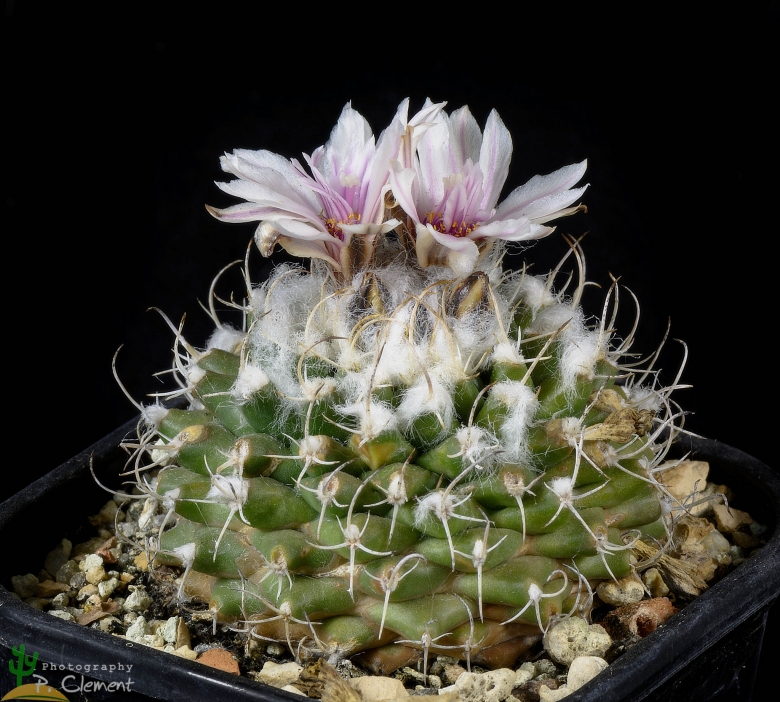
Turbinicarpus nieblae Photo by: Peiffer Clement
Origin and Habitat: North of Ciudad Victoria, Tamaulipas, Mexico (it is the only Turbinicarpus know that grows out of the Sierra Madre Oriental)
Type locality: Mexico, Tamaulipas, Municipio San Carlos.
Altitude: 400 m above sea level.
Habitat: It grows among stones and grasses in a very hot climate (mean annual temperatures 24-26°C) and with elevated rainfall ( 800 mm rain/annum). The soil is calcareous but with a good percentage of organic matter.
Synonyms:
Description: Turbinicarpus nieblaeSN|17438]]SN|19549]] is a fascinating little, very cryptic, geophytic plant belonging to the Turbinicarpus saueriSN|17438]]SN|17438]] aggregate that will probably lump with Turbinicarpus saueriSN|19549]]SN|17438]] ssp. gonzalezii.
Stem: 5-35 mm high and 20-70 mm in diameter, solitary, sub-globose, flattened at the apex, barely protruding from the ground, green to glaucous-green (occasionally tannish- brown), with abundant wool at the apex.
Root: Napiform.
Tubercles: 3-9 mm tall and 4,5-9 mm thick at the base, conical- pyramidal, at the base quadrangular and rounded edges, formed into 4 to 7 angles, and very closely arranged in a double spiral pattern (6 to 14 spirals)
Areoles: Elongate, 2,5-3 mm long by 1-2,5 mm wide, with white wool when young becoming bare as they ages.
Radial spines: 6 to 10 (-17 in young specimens), pectinately arranged and needle-like, 2-7 mm long, white to yellowish with dark chestnut coloured or black tips. The section is cylindrical.
Central spines: One (absent on juvenile specimens) 4-15 mm long, thickened at the base, the section is cylindrical flattened in the centre.
Flower: Funnelshaped, perianth segments 24-25, inner tepals 12 white with a pink to dark violet midvein, outer tepals about 24 mm long and 4-5 mm wide, lanceolate, whitish pink a reddish coffee to violet purple mid-stripe. Stamens 100-120, filaments whitish-pink 6 to 9 mm long, anthers deep yellow; style 11-13 mm long, pink with 6-7 white to yellowish stigma lobes.
Blooming season: Winter.
Fruit: 7 mm long, 5 mm wide, globose to oblong, smooth or with few small scales, green-reddish to dull green, with lateral dehiscence.
Seeds: Pear-shaped 0,9-1,2 mm long and 0,8-1,1 mm diameter, dull black.
Subspecies, varieties, forms and cultivars of plants belonging to the Turbinicarpus saueri group
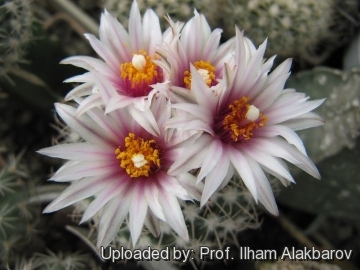 Turbinicarpus nieblae Photo by: Prof. Ilham Alakbarov
Turbinicarpus nieblae Photo by: Prof. Ilham Alakbarov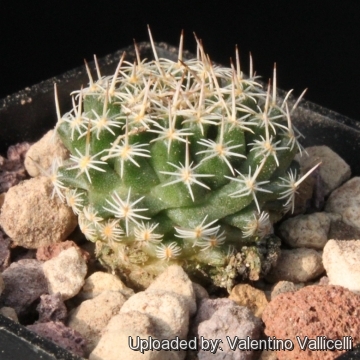 Turbinicarpus nieblae Photo by: Valentino Vallicelli
Turbinicarpus nieblae Photo by: Valentino Vallicelli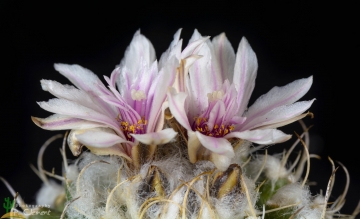 Turbinicarpus nieblae Photo by: Peiffer Clement
Turbinicarpus nieblae Photo by: Peiffer Clement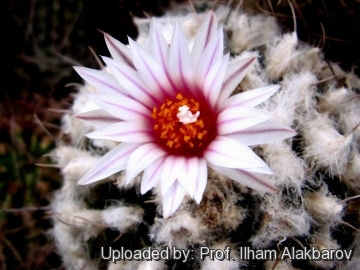 Turbinicarpus nieblae Photo by: Prof. Ilham Alakbarov
Turbinicarpus nieblae Photo by: Prof. Ilham Alakbarov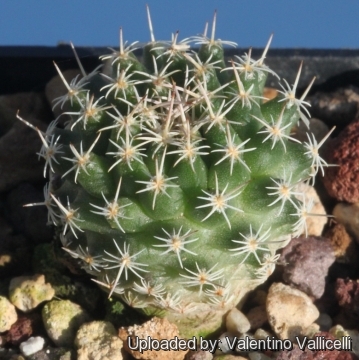 Turbinicarpus nieblae Photo by: Valentino Vallicelli
Turbinicarpus nieblae Photo by: Valentino Vallicelli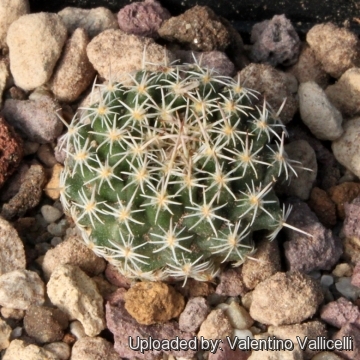 Turbinicarpus nieblae Photo by: Valentino Vallicelli
Turbinicarpus nieblae Photo by: Valentino Vallicelli Turbinicarpus nieblae Photo by: Peiffer Clement
Turbinicarpus nieblae Photo by: Peiffer Clement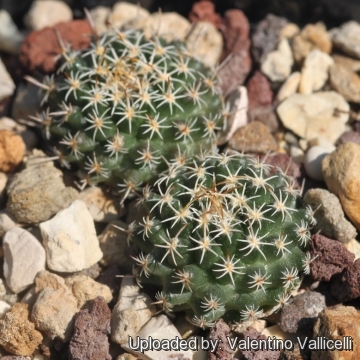 Turbinicarpus nieblae Photo by: Valentino Vallicelli
Turbinicarpus nieblae Photo by: Valentino VallicelliCultivation and Propagation: It’s a fairly easy species to cultivate, but very slow growing. It needs a very well-drained soil, and requires strong sun to part sun to keep the plant compact and low and to develop a good spinal growth. Waterings should be rather infrequent to keep the plant compact, and avoid its becoming excessively elongated and unnatural in appearance. Furthermore it has a tap root, and watering it properly is often difficult, because it tends to crack open or rot if over-watered. Careful watering away from the body of the plant will allow the areoles to keep their wool. Keep dry in winter, or when night temperatures remain below 10° C. It is hardy to -4°C for a short period. Assure a good ventilation.
Reproduction: From seed, since the plant rarely produces plantlets, or grafted.
Your Photos
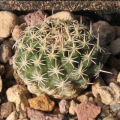
by Valentino Vallicelli



















